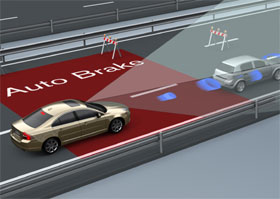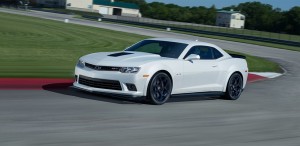
Fuel efficiency is seen as an important number to a person when buying a car to save as much money on gas as possible. That’s why the number of electric and hybrid cars being sold is increasing. To keep up with this trend, most car manufacturers offer an electric or hybrid car in the their lineup. The most popular all electric car that almost every knows is the Tesla model S, but that is out of most people’s budget being that it is a higher end car. Most supercars that are released each year are starting to switch from all gas to a hybrid, which is a mix between gas and electric. Cars like the McLaren P1 and BMW i8 are both cars that have recently been released that are hybrids. These cars are out of most people’s budget and are very expensive, so it’s likely that you aren’t really concerned about fuel economy when shelling out that kind of cash for a car.
But what about for the average consumer who wants to save some money on driving? The Nissan Leaf and Chevy Volt are two all electric cars that are priced so that average person can afford to buy them. Both cars run on nothing but batteries that charged via a regular wall outlet.
The first question to be asked, will the consumer save money when driving an electric car? The short answer is yes you will save money, but in no means will it be right away. You only save a very small amount with each time you charge your car. Assume Car A is electric and Car B is gas powered. Car A has a max range of 30 miles when fully charged (which is about average for an electric car) and the power used to charge it equates to about $2.75(again, about the average is cost to charge a car with that range) Car B has a 300 mile range when fully topped off (10 gallon tank at 30mpg) with an average gas price of $3.oo per gallon, so $30.oo to top it of. So, in order to get the same distance from Car A, it would need to be charged 10 time to get 300 miles out of it. After charging it 10 times at an average cost of $2.75 per charge, it would cost about $27.50 to get 300 miles out it. The driver of Car A saves about $2.50 per 300 miles driven. So yes, you do save money at the pump, or wall in this case, but you also have to factor in the price of an electric car which is substantially more expensive than a regular gas car. Most electric cars are in the $30,000+ price range because of how expensive lithium batteries are, while gas cars are in the low $20,000 range.
Are electric cars practical? Unless you live in short driving distances to everything, them no they aren’t practical in most situations. With an average range of 30 miles and then a recharge time of 6-8 hours, you can’t get very far with them. If your car needs a charge when you get home, you’re house locked for a good amount of time until that thing is charged up. If you want to go anywhere outside of 30 miles you are kind of out of luck unless you have a second car. But needing 2 cars just to travel distances defeats the purpose of the electric one all together. Why even bother with an electric car and just just buy a gas powered one. Electric cars will be a bust until manufactures can get the price down, increase the range, and decrease the charge time. Until then, electric cars just aren’t worth it.
Sources: http://ludens.cl/philo/electric.html
http://www.dailyfinance.com/2013/06/24/gas-vs-electric-cars-cost-comparison/


